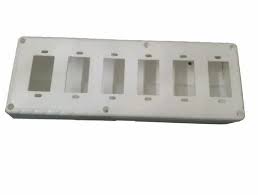Electricity is an integral part of our modern-day lifestyle. We cannot imagine our lives without it. However, electrical wires and appliances pose a significant risk if not handled properly. Electrical faults can result in fires that can destroy properties and cost lives. Protecting your home from electrical hazards is of utmost importance. One of the best ways to ensure safety is by using electrical covers. This comprehensive guide will help you understand the importance of using electrical covers and how to choose and install them.
1. Importance of Electrical Covers:
electrical cover prevent direct contact between people and electrical wires or appliances. They also protect the electrical system from dust, moisture, and pests that can damage it. Electrical covers include outlet covers, switch covers, junction boxes, and panel covers. These covers are available in various materials, such as plastic, metal, and rubber, and can be customized to fit specific electrical components.
2. Types of Electrical Covers:
Outlet covers come in two types: plug-in and tamper-resistant. Plug-in covers protect children and pets from inserting fingers or other objects into the outlet. Tamper-resistant covers have shutters that cover the outlet holes and can only be opened by inserting a plug. Switch covers protect switches from moisture, dust, and other contaminants. Junction boxes cover the connection between wires and prevent electrical shocks or fires. Panel covers protect the main electrical panel from unauthorized access and prevent fires caused by faults in the panel.
3. Factors to Consider When Choosing Electrical Covers:
The first factor to consider when choosing electrical covers is the area of the house where they will be installed. Bathroom outlets, for example, require covers that are waterproof and moisture-resistant. The second factor to consider when choosing electrical covers is the material used. Metal covers are stronger, more durable, and fire-resistant, while plastic covers are cheaper and easier to install. Thirdly, the size of the cover should match the size of the electrical component. Oversized covers can be dangerous and result in electrical fires.
4. Installation of Electrical Covers:
Electrical covers should be installed by a qualified electrician who can ensure that the covers are installed correctly and that the electrical system is not compromised. The electrician will switch off the power supply before installing the covers, remove the old covers, install the new covers, and test the electrical system to ensure that everything is working correctly.
5. Maintenance of Electrical Covers:
Electrical covers require regular cleaning to remove dust and debris that can accumulate on them over time. The covers should also be checked periodically to ensure that they are not damaged and that they are still protecting the electrical system. Damaged covers should be replaced immediately to prevent electrical hazards.
In short:
Electrical covers are a necessary safeguard for your family, your home, and your electrical system. They provide protection against electrical shocks, fires, and damage. When choosing and installing electrical covers, it is essential to consider the location, size, and material of the covers. Regular maintenance of electrical covers is the key to ensuring that they are still providing adequate protection. By following these simple steps, you can protect your home and your loved ones from electrical hazards.
Protect Your Home with Electrical Cover: A Comprehensive Guide

Categories:


